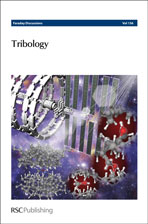Why can TiAlCrSiYN-based adaptive coatings deliver exceptional performance under extreme frictional conditions?
Abstract
Adaptive TiAlCrSiYN-based coatings show promise under the extreme tribological conditions of dry ultra-high-speed (500–700 m min−1) machining of hardened tool steels. During high speed machining, protective sapphire and mullite-like tribo-films form on the surface of TiAlCrSiYN-based coatings resulting in beneficial heat-redistribution in the cutting zone.
- This article is part of the themed collection: Tribology

 Please wait while we load your content...
Please wait while we load your content...